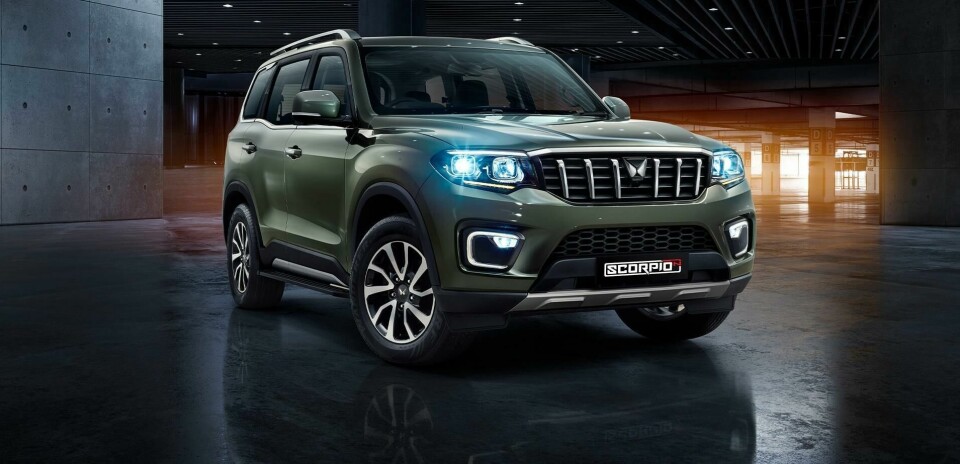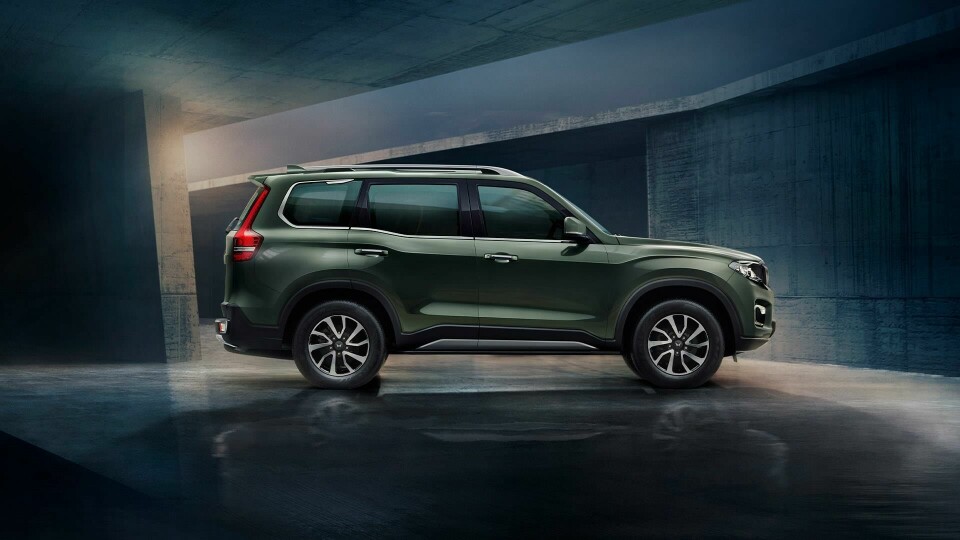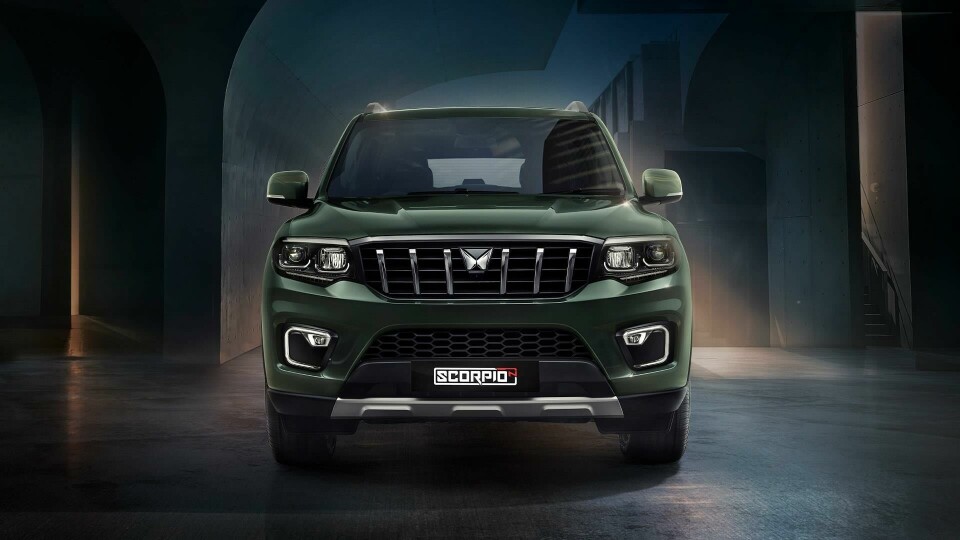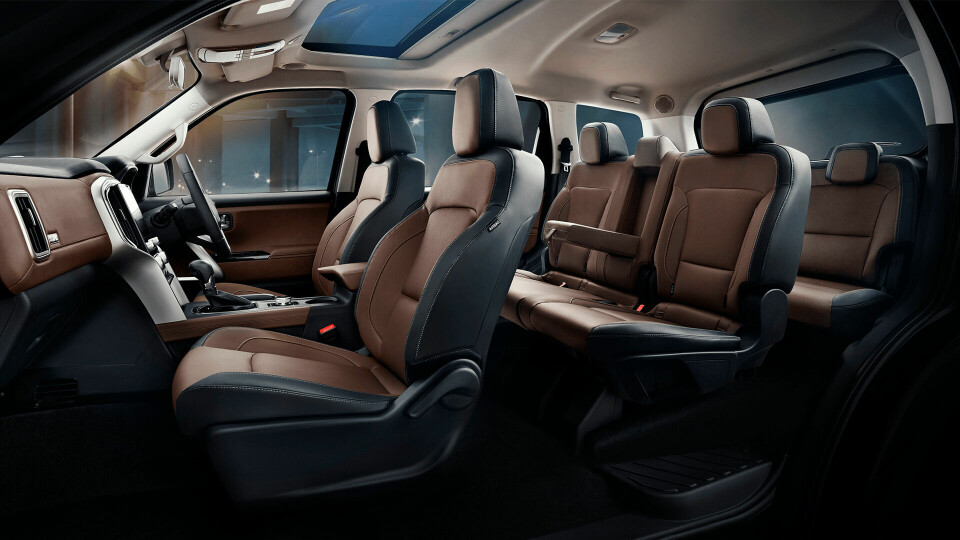
Pratap Bose on Mahindra’s ‘Big Daddy’ of an SUV
The Scorpio-N is a ground-up revamp of an Indian icon. Mahindra’s design lead tells Car Design News how the team sought to preserve, if not amplify, the model’s heritage
Attracting Glastonbury-esque interest, Mahindra’s new SUV clocked 25,000 orders within the first minute of books opening on 30 July, and 100,000 within the first 30 minutes. Totalling US$2.3bn in value (and counting) it was a fair scoop for the Indian car maker and an indication of just how iconic the Scorpio nameplate is in its home market.
But Mahindra has loftier goals, heralding the new Scorpio-N – which informally stands for ‘next generation’ – as a truly global product. Car Design News caught up with Pratap Bose, head of design at Mahindra and judge at the People Awards, to find out how the team approached the latest generation and where SUV design may be headed in future.

Car Design News: The Scorpio-N was a result of collaboration between Pininfarina in Italy and several Mahindra teams across India and the US. How does that relationship work?
Pratap Bose: It is on a project-by-project basis. Of course, if something is very specific to the Indian market I would usually only ask the India team to work on it. Having said that, we have involved Pininfarina in the past in such projects. In some cases, all three studios will compete but generally there is a lot of collaboration.
CDN: Does this mix of regional expertise ultimately lead to a more well-rounded product, and in this case, a car that suits a wider range of markets?
PB: Absolutely.Collaboration is very powerful.We’ve seen that when we pool ideas from two or three studios, someone who is not necessarily from that market can have a very interesting interpretation of the product. This outside point of view means they may spot something that people within the market haven’t noticed. Getting a huge funnel of ideas is important in the design process, as the final product is only as good as the number and quality of ideas you have to begin with. In my experience, when we invite the global team to compete on projects you get an incredible interpretation of ideas. Cross pollination is fundamental.
We said that not be a single component would be carried over from the last generation, so that’s what happened
CDN: For those that aren’t aware, how significant is the Scorpio nameplate?
PB: The Scorpio as a badge has existed since 2002. It was a huge turning point for Mahindra back then to do an SUV which had a completely new architecture, a new team, a new powertrain, chassis, everything. The kind of impact it had on the Indian market has gone down in Indian automotive history.
CDN: Quite a big deal, then. Which direction did the team want to take with the new Scorpio-N: follow the blueprint or try something completely different?
PB: Over the years, the Scorpio has been updated and refreshed, changing powertrains and refining things along the way. However, we reached a point where we needed another paradigm shift: 20 years later, the world around us has moved on quite a bit. There is much more urbanisation and we felt that the new Scorpio-N has to target a wider audience. You bring in a level of refinement, sophistication, drive quality, perceived quality and take all this to a different order than we have done before. We didn’t ever want to alienate any of our traditional base of customers, but we also wanted to bring in a new set of customers. That was the main effort. We wanted a completely new generation that draws from this lineage but to take it to a completely different point. We said that not be a single component would be carried over from the last generation, so that’s what happened.

CDN: The new Scorpio-N is described as the “Big Daddy” of SUVs, and the marketing push generally gives the impression that it’s all about road presence. What was the idea behind this?
PB: In India, we have an expression: Baap. This means you’re the boss, the big daddy of something. It is a very powerful statement of authority. Someone who has mastered, excelled or has a presence that exceeds their physical stature. It comes from a very evocative place. From personal experience with previous Scorpios, when one appears in your rear-view mirror, you make way for it. It has this projection of authority.
It is hard to pin down how or why the car has this. The Scorpio means a lot to people in India. It is used in the armed forces; it is used by politicians who have to go out to their constituencies. It is respected. There is a combination of factors, but the visual image of the car has always leaned towards power and authority. As part of the early campaign for the car, we actually ran an advert with the line: “Congratulations, your father is born.”
If you saw where we started 20 years ago and look at where we are now, things are at a completely different level
CDN: How was this reflected in terms of its silhouette and styling?
PB: The Scorpio has always been extremely recognisable in India. Part of that is down to its body-on-frame architecture, which many companies are moving away from. But for us and the core customer of the Scorpio, the body-on-frame is absolutely central to the idea of the vehicle itself. Our all-new architecture gives us a stance and a proportion that is very unique; if you look at this segment, many SUVs are in fact based on cars, whereas this is an SUV from the ground-up. Visually, it is far more powerful than its physical dimensions suggest. We are challenging some of the other D-segment SUVs even though it is slightly smaller than those competitors. Its visual dominance is extremely strong – it almost gives the impression that it is indestructible.
CDN: What about the interior – how did you approach things like HMI, materials and layout?
PB: We have moved to some very large displays in some of our other products, but here we made a conscious decision to fit in with what the Scorpio customer would be comfortable with. As such, we didn’t carry over the large dual screen display (which suits some other products) and stayed true to what the Scorpio nameplate means. The whole idea was to create a robust interior with great perceived quality. If you saw where we started 20 years ago and look at where we are now, things are at a completely different level.

I was also very keen that this body-on-frame architecture was reflected in the interior as well. There are two main rails of the chassis, upon which all the mechanical components are mounted. Then you bolt on the body. I wanted some sense of this in the interior. We focussed on emphasising those rails, the thickness of materials and creating a feeling of robustness and strength. We eventually chose a design that holds the screen and the vents together, and almost looks as if it is connecting the car directly to the chassis.
CDN: And with a name like Scorpio, you’d expect a sting in the tail. Did you consciously try to work the concept of a scorpion into the design – or was that a little too abstract?
PB: Of course we don’t directly mimic a bio form, but you can see that scorpion stinger which swings across into the rear window. The rear of the car is also thicker and gives a similar kind of stance. Generally speaking, it was crucial that we signal that this is a front-engine, rear-wheel drive SUV. We wanted to emphasise that there is a lot of power at the rear, which is where the muscle comes from. It has a real strength in its haunches and in its architecture.
The SUV is not becoming one of these hard-boiled sweets that you often see in other segments. It is all about refined, sophisticated strength
CDN: How do the demands of the Indian market differ to Europe or North America from a design perspective, or has globalisation caused things to become more standardised?
PB: There are some considerations which are a little more unique to India. When you have tight urban traffic in Mumbai or any of our big cities, for example, the field of view is much closer. This means it is very important to treat the top half of the car in a characteristic way. Driving alongside the Scorpio, you may not get to see the car as a whole like you would in the US, where cars are more spaced out. This means it is important to build in bits of character and recognisability – you should still be able to see that it is the new Scorpio.
CDN: Where do you see the future of SUV design headed? It seems to be one of the few segments that isn’t dominated by aero – a topic you spoke to us about recently.
PB: The SUV is not becoming one of these hard-boiled sweets that you often see in other segments. It is all about refined, sophisticated strength and there are certain treatments that are allowing SUV design to keep that look. We can use chamfers to make materials look thicker than they are, for example, almost as if the car is made from a solid block. In terms of what happens in 20 years, I think we will have completely moved to electric architectures, which will inevitably bring some changes.





